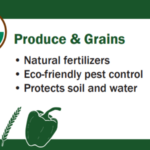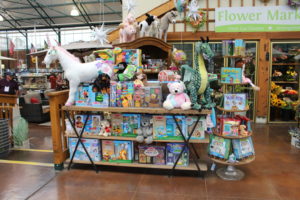A More Direct Mail
By filtering down your customer list, direct mail can have a cost-effective reach and return for your garden center.
When you live in a rural part of the country where there are generally more cows than people, you can face some unique and interesting marketing challenges. I always have to chuckle when I attend seminars and am asked, “How far does your marketing area reach? Five miles? Ten miles?” I love to watch faces when I casually say, “Oh, about one to two hundred miles. In each direction.”
Our market area at Four Seasons Greenhouse & Nursery in Dolores, Colo., runs west through most of eastern Utah, east to Pagosa Springs, Colo.; north to Telluride, Colo., and beyond; south into Farmington, N.M., and edges into Albuquerque; and southwest to the Grand Canyon, Ariz. It’s a big place filled with wide open spaces.
One of the biggest challenges we face is choosing the method of communication with our customers that works best for us. Although we use the internet heavily, we live in a place where some of the folks often still only have dial-up service or they are remote enough that they can’t get internet service at all.
To purchase airtime on enough radio stations to saturate the area doesn’t always work, although I do use a good deal of radio because of the comparatively very low rates I receive and the wide coverage it provides. Newspaper advertising is not practical in a place where each little town has its own weekly paper. So the challenge becomes how to effectively reach our customers on a regular basis and the answer for us, in part, has been to continue direct mail.
Direct mail still can work effectively if you use it wisely but much of its success depends on several factors. How good or accurate is your mailing list? How attractive is the offer you are making? What needs are you fulfilling? How good is your message or information that you are providing? And finally, is it timely?
On average, direct mail experts predict an average of anywhere from .5 to 5 percent as a typical expected return, depending on the industry. For instance, special offers to existing customers average in the 2 percent return range. Mailings from retail stores, on average, return in the 3.36 percent range. Non-profits tend to do best with averages around 5.35 percent. A very targeted list tends to do better than a “cold-call” type mass mailing.
At Four Seasons, I average a little better than 10 percent each year, per mailing, depending on the weather. Since most of us know that it’s less expensive to keep an existing customer than find a new one, direct mail is a good option if managed well.
Refining Your List
When we added our POS system in 2008 and began capturing names and addresses, my customer list soared from about 1,500 valid names to more than 8,000 today. Obviously my marketing and direct mail budget did not soar along with it, so we found ourselves facing some decisions about how to continue direct mail effectively and not break the bank. Here’s what we did.
We use Counterpoint and learned early on that we’d need some kind of CRM (Customer Relationship Management) program. We had our provider write a custom program and it works beautifully. The postcard mailings are planned out at the beginning of each year. When the time comes to mail a particular card, I drill down the customer base to a specified number of names.
For instance, if we have decided to mail 2,500 cards, I go into the POS and play with this program until I get 2,500 valid addresses by changing the filters for that particular offer. We’ve found that initially running the filter to eliminate anyone who spends under what our average ticket is, will cut the list considerably. Of course the risk you run is not sending an offer to someone who is used to receiving the postcards, so we keep a stack of extra cards at the registers for anyone who asks.
If it’s an offer for vegetable plants, I will first sort customers who have purchased vegetable plants in the past, then add in a date range, usually over the last 12 months. Each time, I sort by the amount the customer has spent over the last year as well. I have the ability to sort by just about every field available to us in our POS system.
I can drill down my list to extract very specific data. For example, I can pull a list of people that purchased roses between April 1 and June 30, spent more than $50 on roses, and spent more than $100 total ticket all year. This effectively eliminates customers who have no interest in roses and helps to trim the list.
Don’t discount the effectiveness of direct mail, depending on your customer base. We’ve enjoyed success with this old fashioned method of marketing. If your customer base includes an older population or a non-tech savvy population, it can still work quite well, if you manage it in a way that is cost effective. It’s a question of matching the message to the method to the market. Just make sure that the offer is a good one, that the list which you mail to are the right recipients for that offer, and that it goes out in a
timely manner.


















 Videos
Videos





